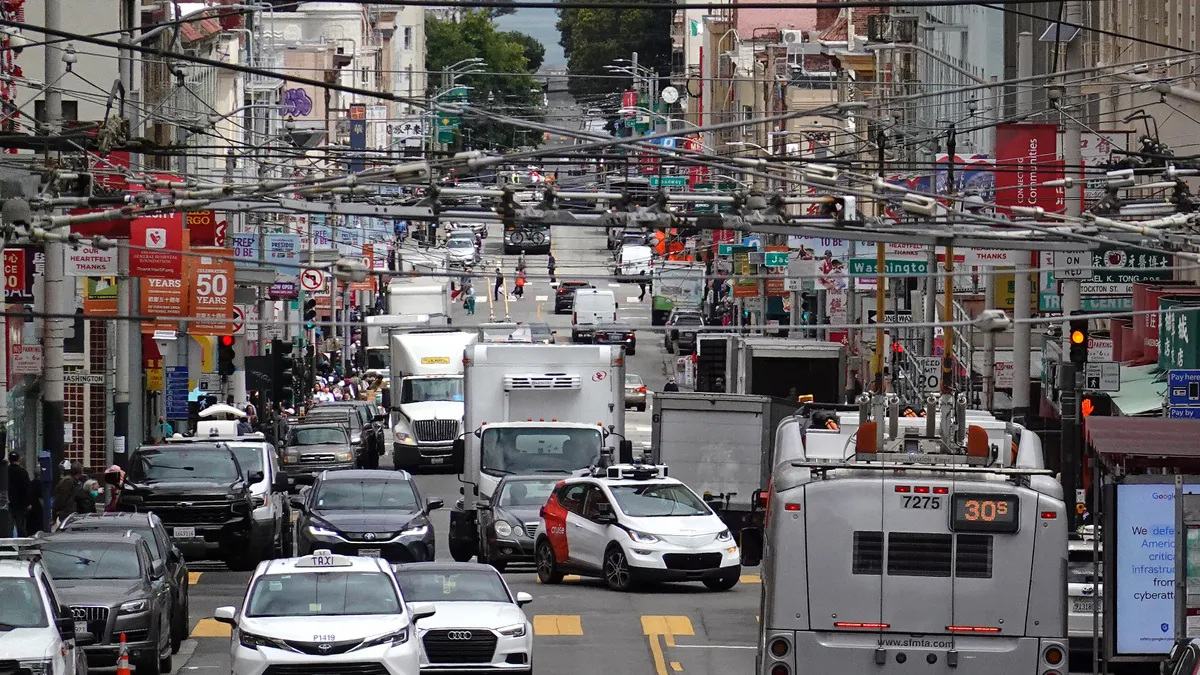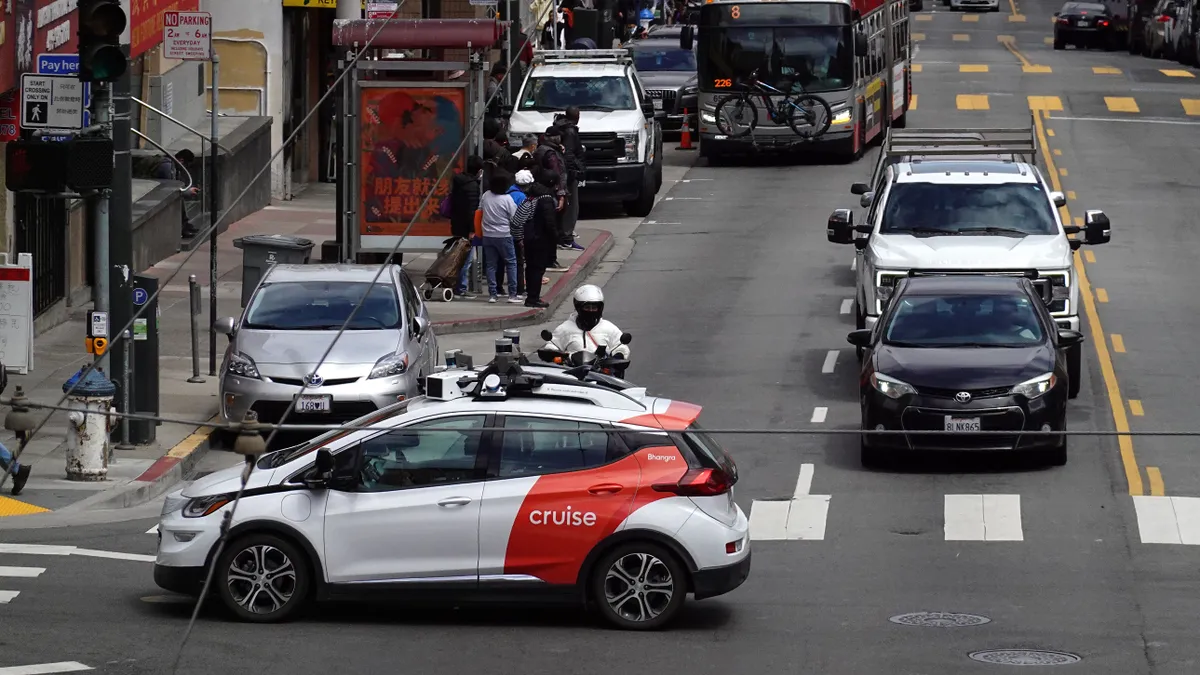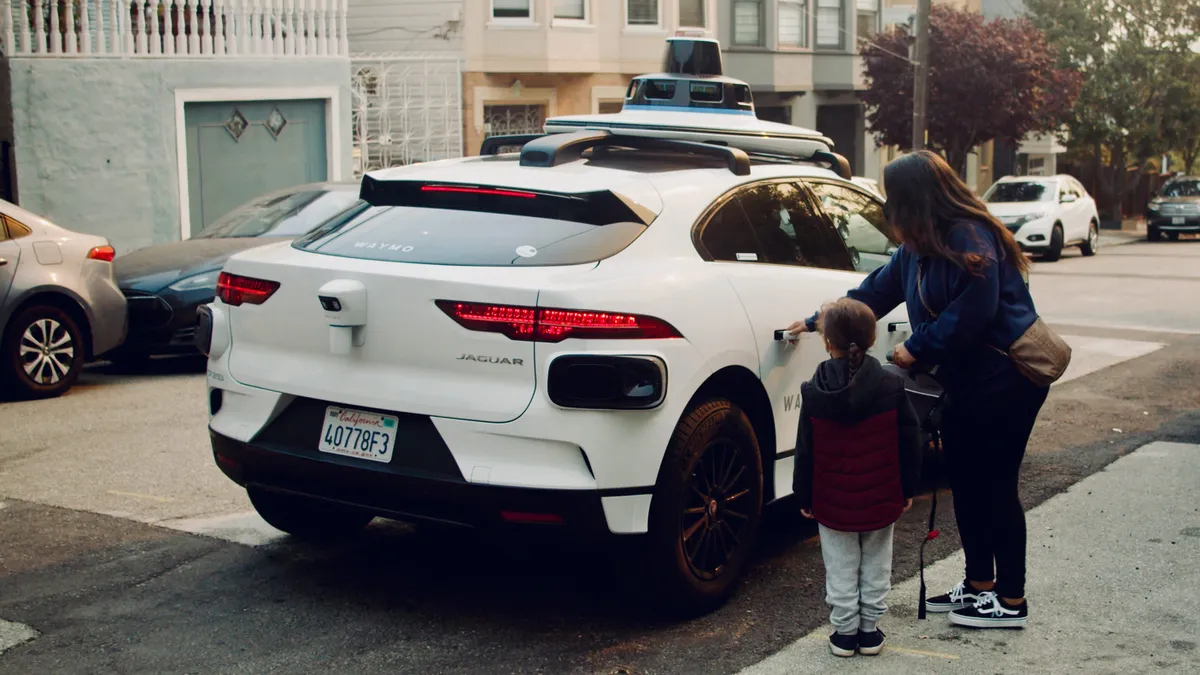Dive Brief:
- The National Highway Traffic Safety Administration opened a preliminary evaluation Monday into the safety of Cruise self-driving vehicles around pedestrians, following two reports of pedestrian injuries from the company’s vehicles. NHTSA said it found two more relevant incidents through videos posted online. A preliminary evaluation will help determine the scope and severity of the potential problem.
- In the most recent incident on Oct. 2 in San Francisco, a woman was struck by a hit-and-run driver and thrown into the path of a driverless Cruise vehicle unable to stop in time to avoid hitting her. She suffered traumatic injuries after being pinned under the Cruise vehicle, a Chevrolet Bolt electric vehicle, according to news reports. The other incident reported to NHTSA was a Cruise vehicle with a green light that struck a pedestrian in a crosswalk at low speed.
- NHTSA has been investigating Cruise since December for incidents where Cruise vehicles came to a standstill on the road, creating dangerous situations for passengers and other drivers.
Dive Insight:
The investigations come as Cruise, Waymo and other companies plan to put driverless ride-hailing vehicles on the streets of more U.S. cities.
Cruise, a General Motors subsidiary, began deploying autonomous ride-hailing vehicles in San Francisco in the summer of 2022. Within weeks of carrying paying riders, there were reports of stranded vehicles, erratic vehicle behavior and at least one accident. Despite these incidents and objections voiced by the San Francisco Fire Department and San Francisco Municipal Transportation Agency, the California Public Utilities Commission authorized Cruise and competitor Waymo in August to operate paid driverless robotaxis throughout San Francisco.
San Francisco City Attorney David Chiu filed a motion on Aug. 16 to stop the CPUC decision, citing “numerous reports” of autonomous vehicles interfering with first responders, construction workers and public transit. “We have seen that this technology is not yet ready, and poor AV performance has interfered with the life-saving operations of first responders,” he said in an Aug. 17 statement.
Two collisions took place within days of the CPUC decision. Cruise agreed to a California Department of Motor Vehicles request to reduce its robotaxi fleet in San Francisco by 50% while the DMV investigates these incidents.
In early September, local news station KRON reported a situation where two autonomous Cruise vehicles delayed an ambulance en route to a hospital by blocking a street. The patient, a pedestrian struck by another vehicle, died at the hospital.
John Bouchard, secretary-treasurer of Teamsters Local 350, said in an Aug. 22 press release, “Cruise vehicles have gotten stuck in wet cement, caused a massive traffic jam outside of a music festival, and collided with a fire truck – all since the California Public Utilities Commission granted unlimited expansion for these vehicles less than two weeks ago.”
Cruise, however, contends in a Sept. 27 blog post that its vehicles are safer than human drivers. Citing a study that was a collaboration of Cruise, General Motors, the University of Michigan Transportation Research Institute and the Virginia Tech Transportation Institute, the report found that Cruise AVs were involved in 65% fewer collisions in San Francisco than human ride-hailing drivers from 2016 to 2018.















